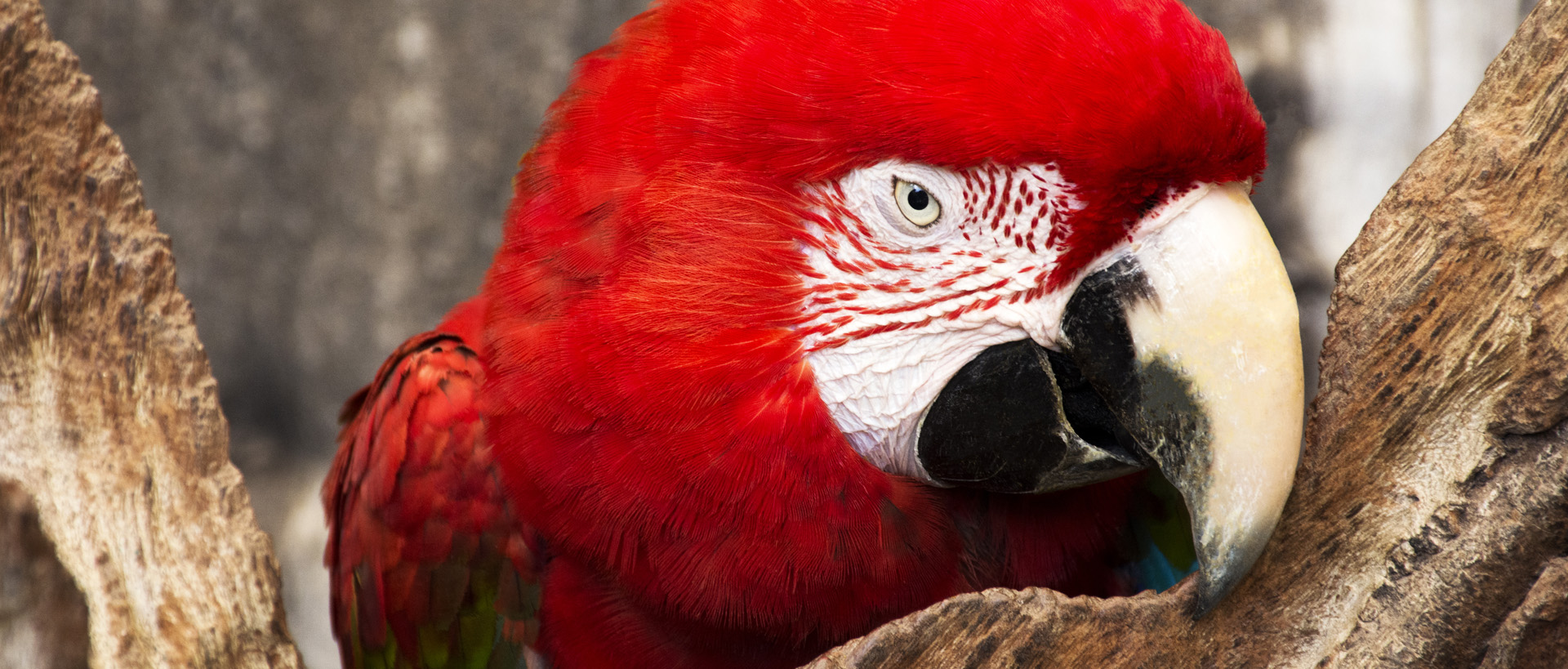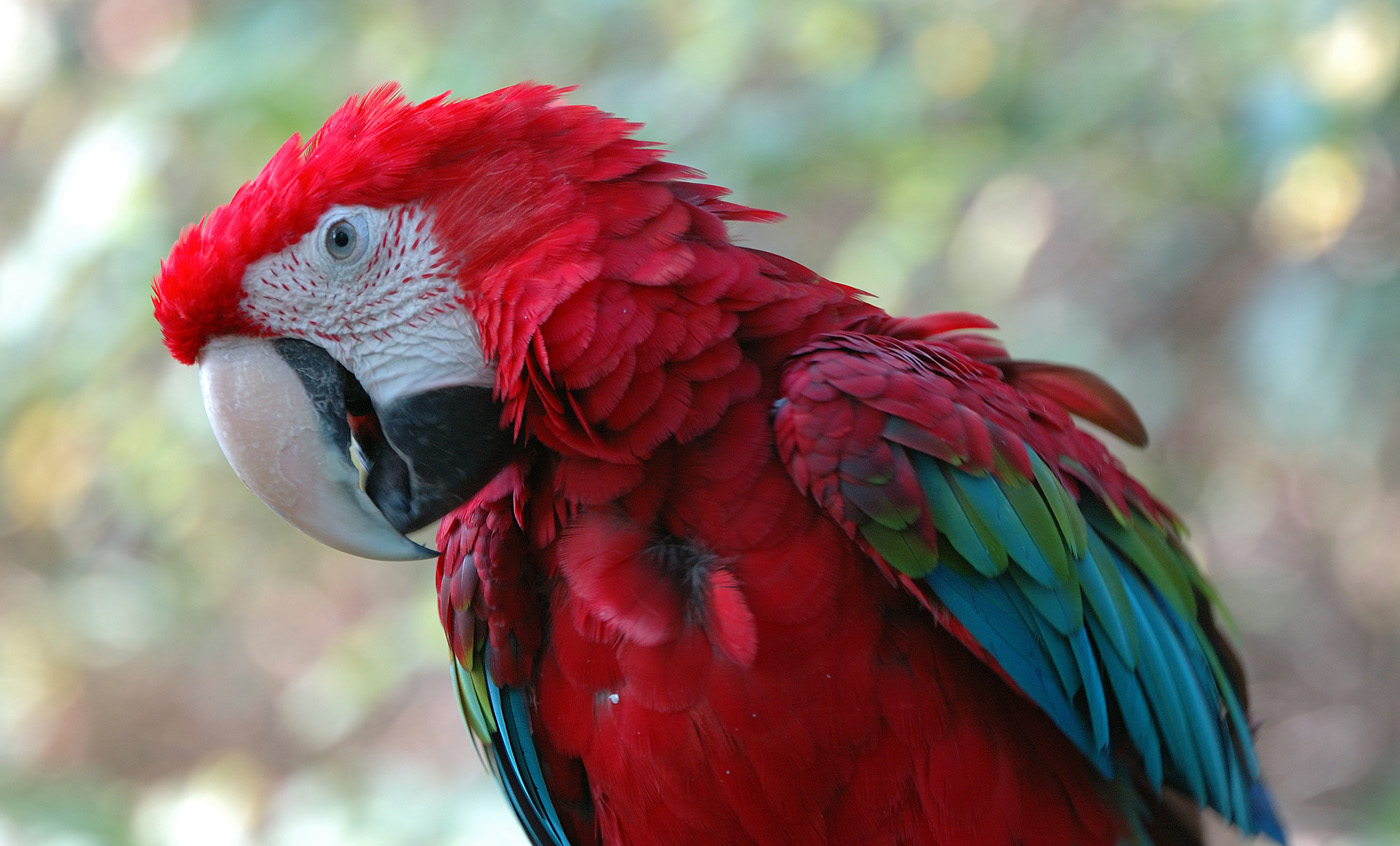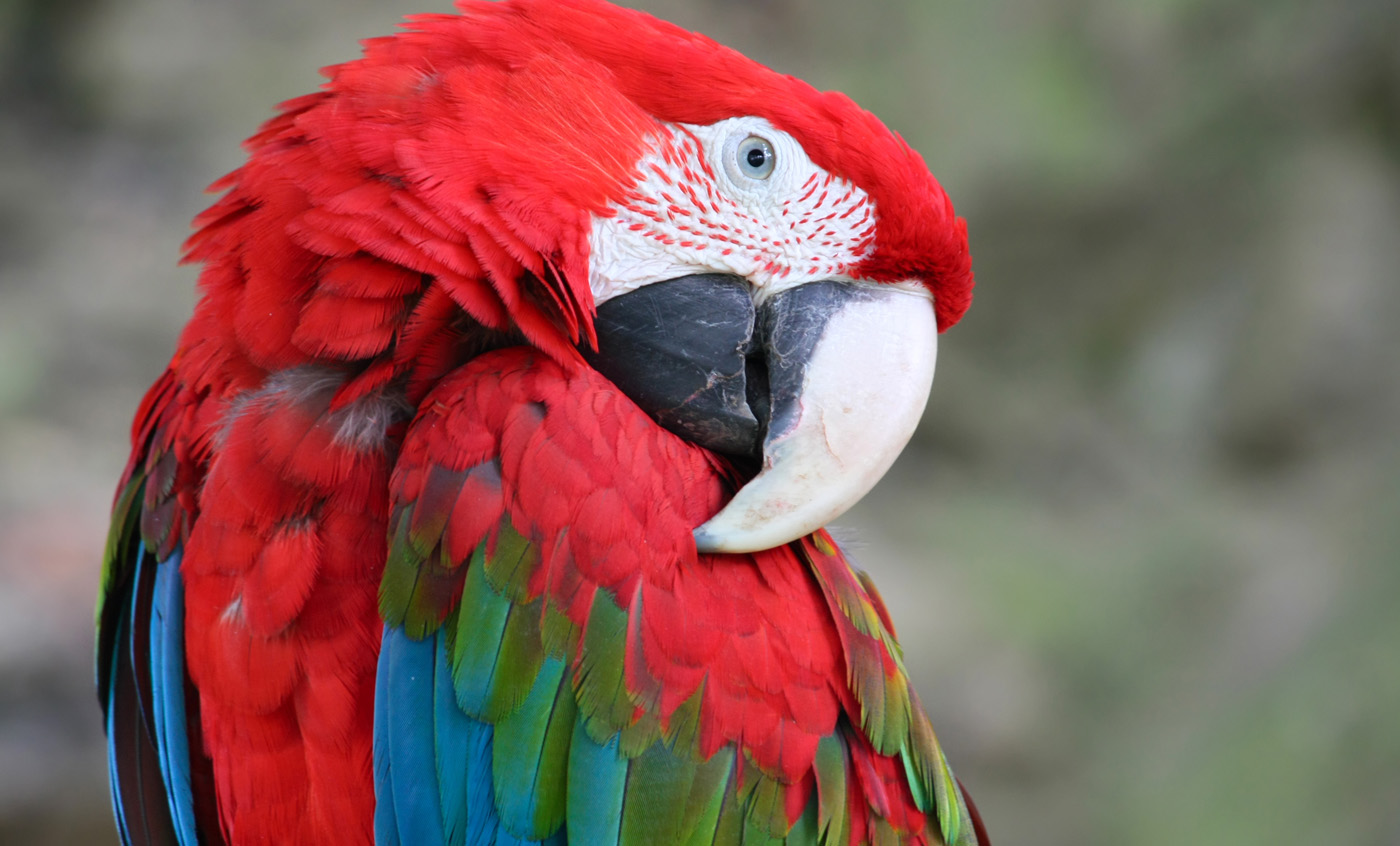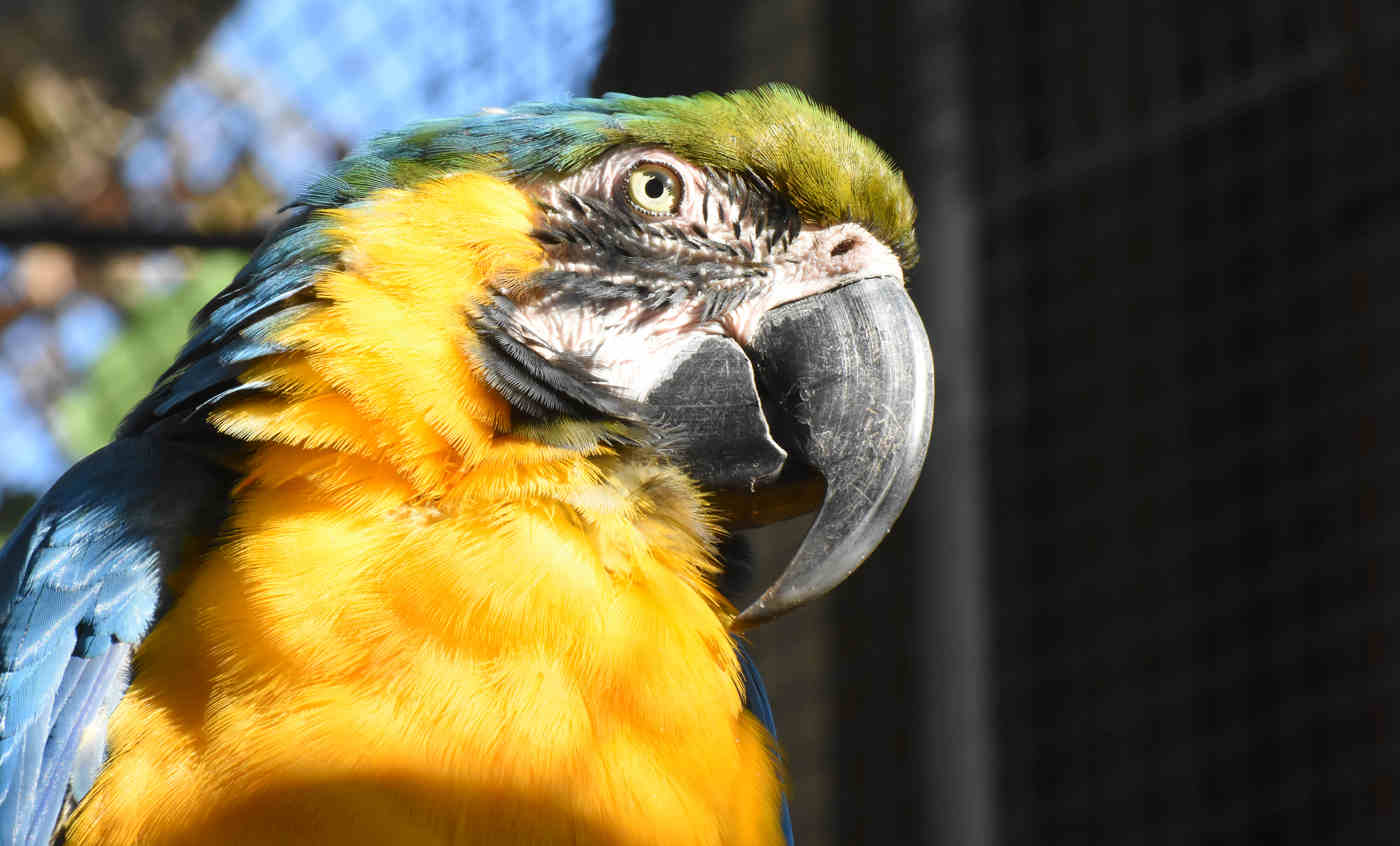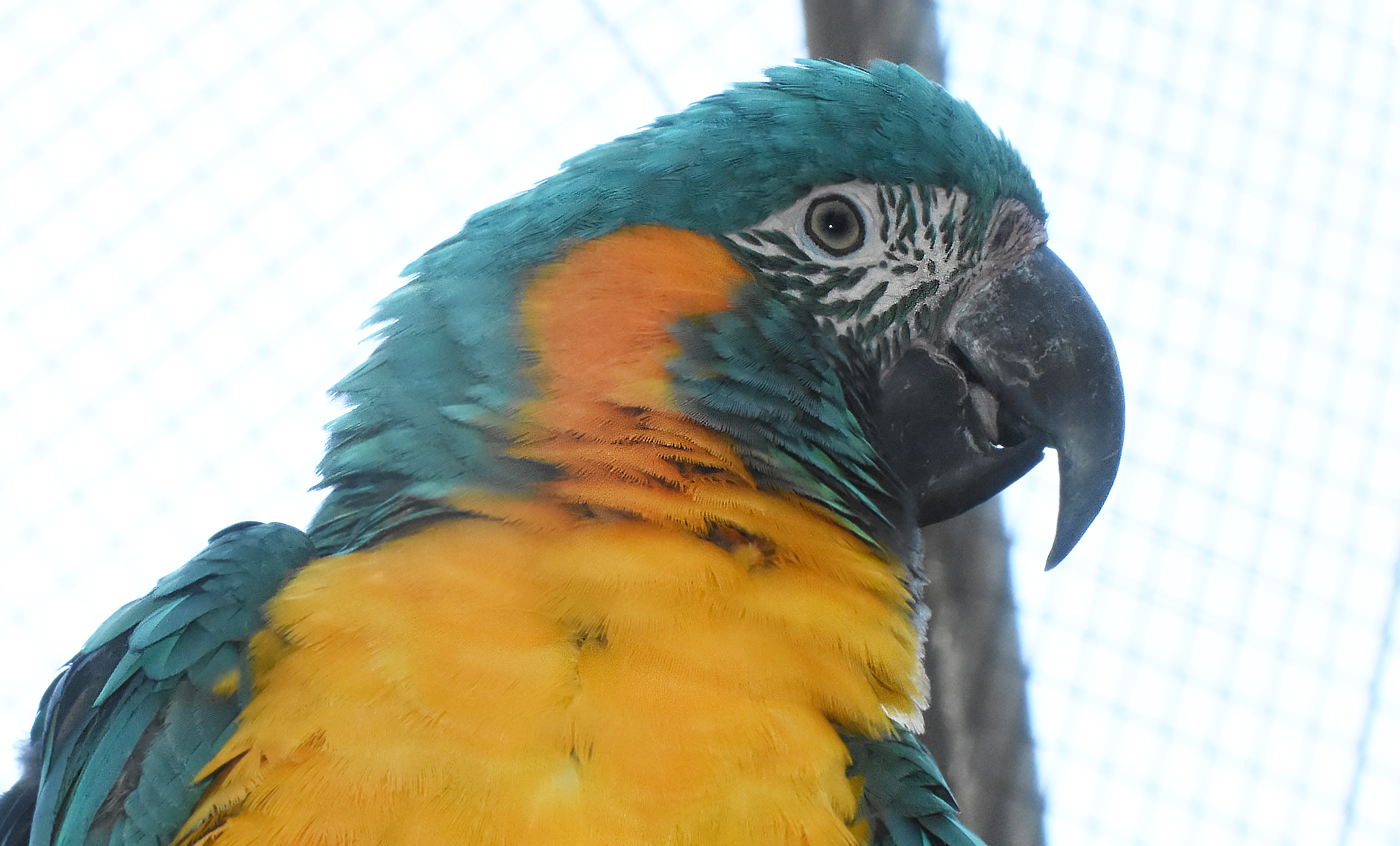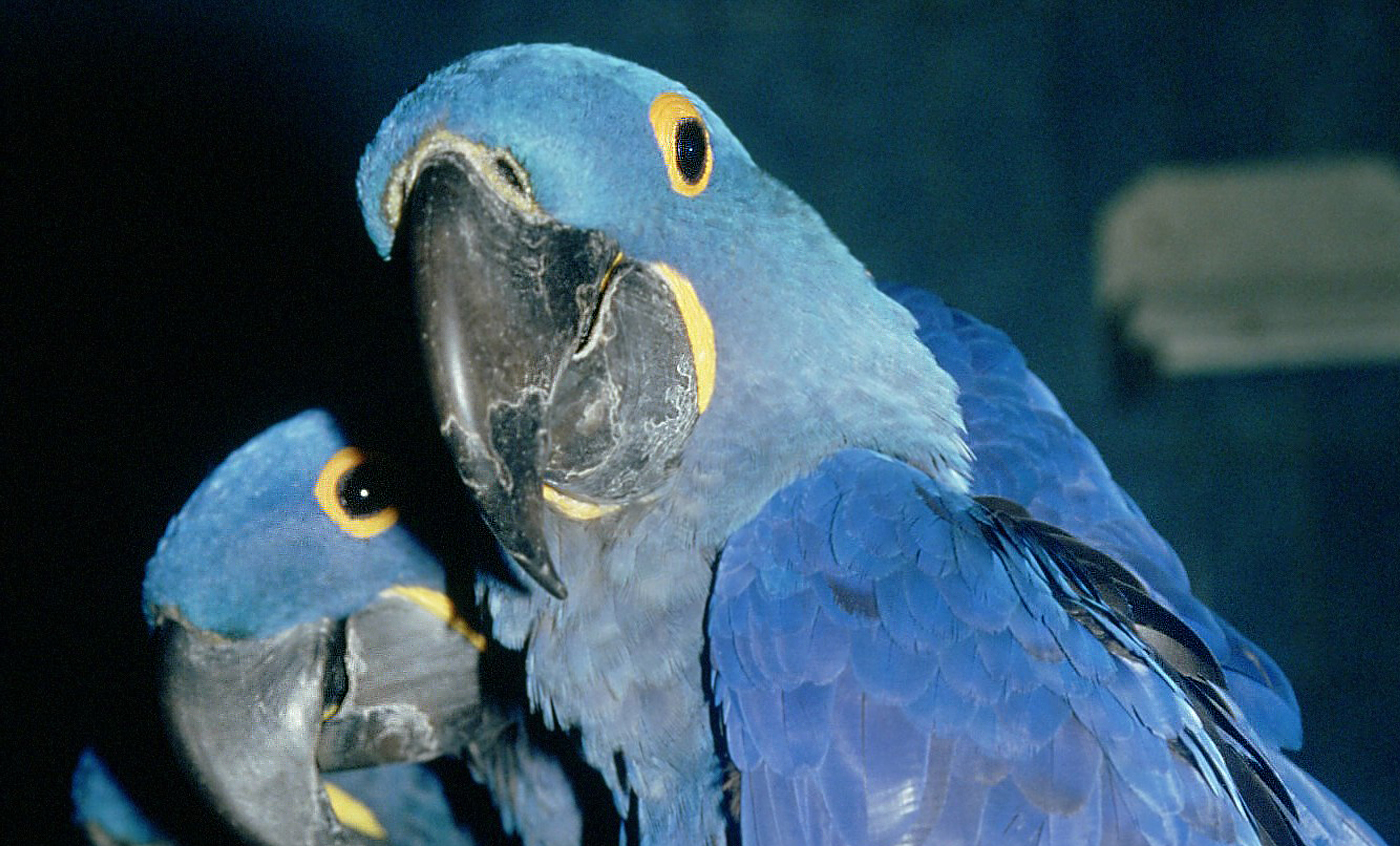Red-and-green macaw
This macaw lives in the rainforests all the way from the west of Panama to the north of Argentina and is still quite common. It is not a very social species and lives in pairs or small family groups, rarely forming large flocks, unlike other macaws. It can be distinguished from the scarlet macaw by the green edges to its wings and the small feathers in stripes around the eyes.
Natural habit
North and center of South America east of the Andes.
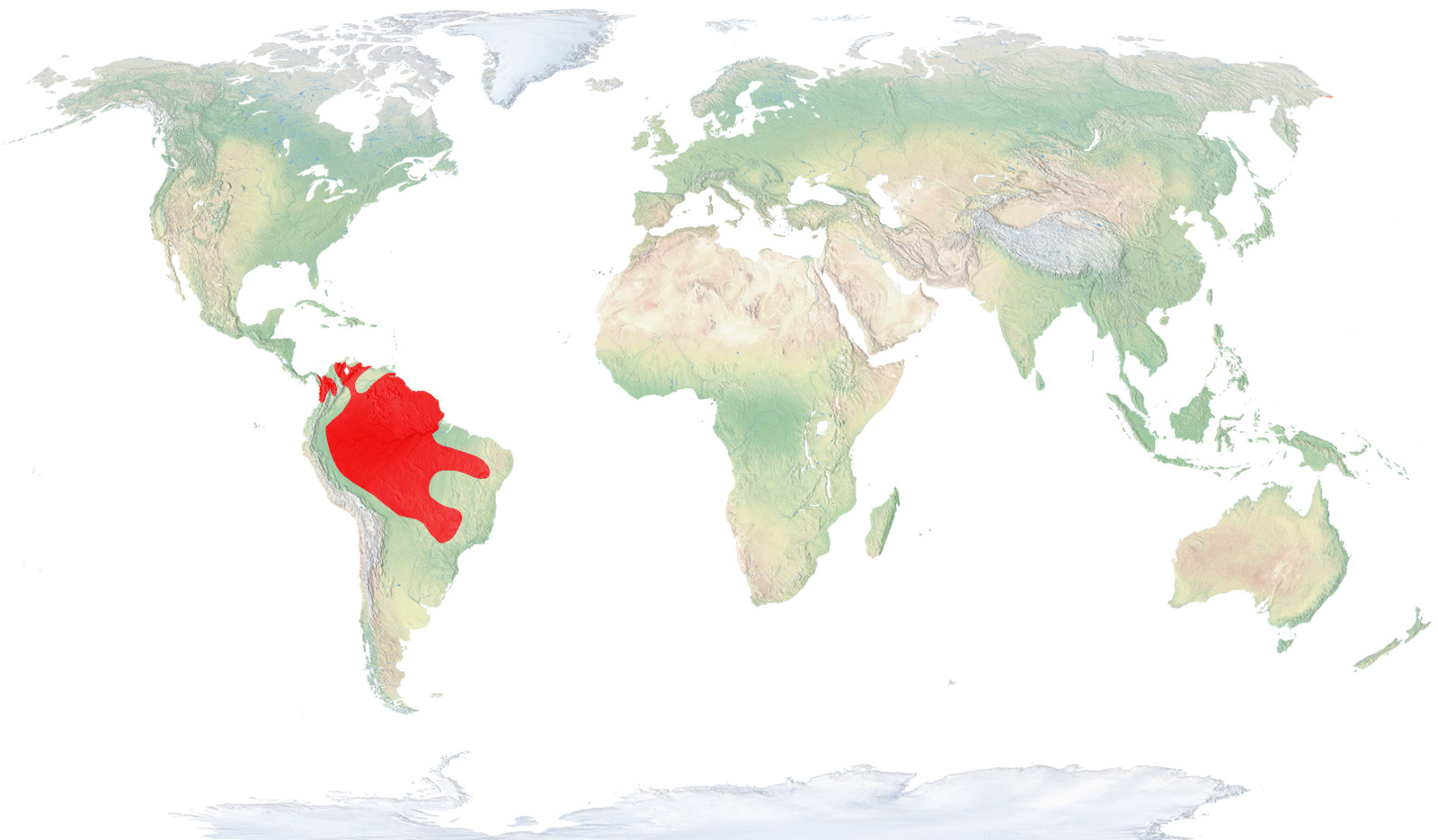
- Distribution / Resident
- Breeding
- Wintering
- Subspecies
Risk level
- Extint
- Extint in the wild
- Critically endangered
- In Danger
- Vulnerable
- Near threatened
- Minor concern
- Insufficient data
- Not evaluated
Taxonomy
Physical characteristics
Biology
Reproduction
Biology
The red-and-green macaw has red plumage on the top part of its body, with green and blue back and wings. The tail, longer than the rest of the body, has iridescent teal and blue feathers. The featherless face is white with darker striations, yellow irises and a two-coloured beak: the large curved top mandible is white and the bottom one is black.
They inhabit lowland and mountain tropical forests up to 1500 metres high, although they can also penetrate more open savannahs, following the wooded shores bordering waterways. They can also be seen close to the coast in some areas. Their area of distribution includes central and northern South America, east of the Andes Mountains, from southern Panama, through Colombia, Venezuela, the Guianas, Brazil, Ecuador, Peru and Bolivia to Paraguay and northern Argentina.
They feed on seeds, nuts, fruits, berries and different types of plant matter that they find high in the treetops.
They make nests in holes in trees and occasionally on platforms dug into the steep banks of rivers, in which they lay two or three eggs.
They tend to live in pairs or small family groups, although in some sites like the clay deposits on the vertical walls of rivers, they can come together in large groups, often mixed with specimens of other parrot species.
Like all macaws, their populations are endangered today, due to the destruction of their forest habitat and excessive capturing for the pet trade.




